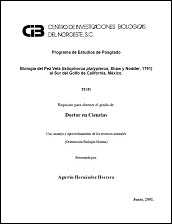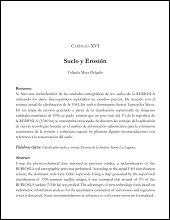Florecimientos algales nocivos: prevención, control y mitigación
Autor
DAVID JAVIER LOPEZ CORTES
JOSE JESUS BUSTILLOS GUZMAN
FRANCISCO EDUARDO HERNANDEZ SANDOVAL
SAUL CHAVEZ LOPEZ
CHRISTINE JOHANNA BAND SCHMIDT
ERICK JULIAN NUÑEZ VAZQUEZ
Metadatos
Mostrar el registro completo del ítemResumen
"Las microalgas que forman florecimientos algales nocivos (FAN) han impactado negativamente los ecosistemas acuáticos, la industria de la maricultura, la salud animal y humana. Uno de los propósitos fundamentales que actualmente se investiga de los FAN es como prevenirlos y en caso de su presencia, cómo controlarlos y mitigar sus efectos. La detección temprana a través de la identificación de sus toxinas y su localización principalmente en moluscos bivalvos, han permitido tomar medidas precautorias como establecer vedas sanitarias y cuarentena para garantizar la inocuidad de alimentos de origen marino. Sin embargo, actualmente el uso de resinas sintéticas fabricadas con el polistireno-divinilbenceno que puede adherir diferentes tipos de biotoxinas, parece ser eficaz para la detección temprana de FAN. Con respecto al control de los FAN, diferentes métodos se han puesto a prueba siendo el más efectivo el empleado con arcillas, aunque el efecto de los flóculos (arcilla-microalga-toxinas) que se depositan en el piso marino, es poco conocido. Para la mitigación, después de que se ha detectado un FAN toxico, las autoridades de salud implementan un plan ya establecido en la legislación federal de riesgos sanitarios para disminuir su impacto, que incluye la medición de biotoxinas y definir si no rebasa los límites máximos permisibles en los productos marinos principalmente de los moluscos bivalvos, este plan es más eficaz con la participación de científicos especializados en el tema, los cuales apoyan a las autoridades sanitarias para el establecimiento de vedas para la extracción, venta y consumo de productos marinos. Un complemento de este plan es la difusión del probable impacto de estos eventos tóxicos a través de los medios de comunicación masiva que realiza la autoridad de salud." "Harmful algal blooms (HAB) have caused negative impacts on ecosystems, marine culture industry, and animal and human health. One of the main challenges of the scientific community is to forecast or prevent, control, and mitigate HAB events before, during, and after they have occurred. Both toxin identification and detection, mainly in bivalve mollusks, have allowed taking precautionary measures such as sanitary closed seasons and quarantine to ensure seafood safety. To date, the use of synthetic resins such as polystyrene-divinylbenzene that may adhere different types of biotoxins is promissory for early detection of these events. Concerning the control of HAB, different methods have been performed but the most effective is the application of clays although little is known on the effect of the flock (clay-microalgae-toxins) on the sea floor. Concerning mitigation, besides federal legislation for maximal toxin content of bivalve, fish, and edible marine products seem to be more effective when scientific community is involved with decision-makers together with education and awareness programs for the population."
Colecciones
Ítems relacionados
Mostrando ítems relacionados por Título, autor o materia.
-
PROMOCIÓN DEL PERIFITON PARA EL CULTIVO DE CAMARÓN BLANCO: HACIA UNA ACUICULTURA ECOLÓGICA
DOMENICO VOLTOLINA LOBINA; JUAN MANUEL AUDELO NARANJO; MARIA DEL ROSARIO PACHECO MARGES -
Suelo y Erosión
YOLANDA LOURDES MAYA DELGADO


